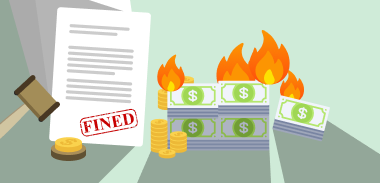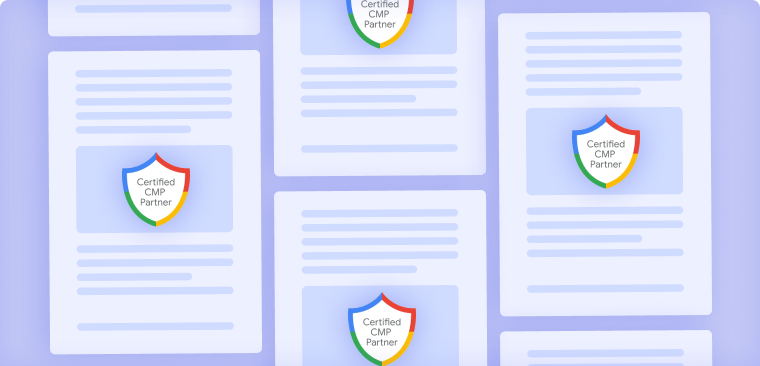What is Consent Fatigue and How Brands can Fight It
June 13, 2025
•
6 min read
Table of contents
back
to the top
What Is Consent Fatigue and How Can Brands Fight It?
You’ve seen it. You visit a website, and before you can even blink, you're hit with a cookie banner. Then another one. And another. Day after day. If you're tired of clicking “Accept All” or “Manage Preferences” before even seeing content, you're not alone.
Welcome to the era of consent fatigue.
But what does this mean for brands? And how can they balance legal compliance with a user experience that doesn’t erode trust?
Let’s break it down.

What Is Consent Fatigue?
Consent fatigue happens when users are overwhelmed by constant requests to agree to data collection. With the rise of GDPR and similar privacy laws around the world, nearly every site now uses a Consent Management Platform (CMP) to handle permissions — but the way this is done matters.
When banners are too frequent, confusing, or pushy, people tune out. They stop reading. They click whatever gets them to the content fastest. And just like that, user trust and privacy take a hit, even if the site is technically compliant.
The GDPR, CMPs, and the Psychology of Consent
The GDPR was created to give users control over their data, not to annoy them into compliance. But some CMP UX designs exploit behavioral psychology in all the wrong ways.
Dark patterns like:
- Bright “Accept All” buttons with hidden “Reject” options
- Overly complex preference managers
- Manipulative wording (“We value your privacy…”)
… all contribute to fatigue and distrust.
Psychologically, users develop learned helplessness — they stop engaging with the banners, treating them like spam. That's the exact opposite of what the GDPR intended.
The Consequences: More Than Just Legal Risk
Yes, non-compliant banners can lead to fines. But the bigger cost is user trust.
Today’s users are privacy-aware. They’re paying attention to how brands handle their data. When they see a clunky or pushy consent experience, it raises red flags:
- “What are they tracking?”
- “Why is it so hard to say no?”
- “Can I trust this site at all?”
And that matters. Because trust affects conversions, signups, loyalty — everything.
How Brands Can Fight Consent Fatigue (and Still Be Compliant)
Here’s how you can protect both compliance and user trust:
1. Design with Empathy
Put yourself in your user’s shoes. Is your CMP UX designed to inform and empower or to manipulate?
- Use clear, plain language
- Provide equal weight to “Accept” and “Reject” buttons
- Avoid pre-ticked boxes
- Let users choose cookie types (analytics, marketing, etc.)
This isn’t just good ethics, it’s good UX.
2. Offer Real Choice, Not Just Legal Cover
A legally compliant CMP isn’t enough if it frustrates users. Real choice means:
- No cookies before consent (prior blocking)
- Easy, one-click rejection
- A frictionless way to change preferences later
3. Reduce Frequency Without Reducing Transparency
Re-prompting users too often contributes to fatigue. Use smart frequency capping and only re-request consent when necessary (e.g., policy changes, new cookie categories).
4. Keep Consent Logs GDPR-Ready
Even if you collect consent correctly, you must be able to prove it. Store consent records.
Final Takeaway
Consent fatigue isn’t just a user problem, it’s a brand problem. When users feel overwhelmed, they stop trusting. When they stop trusting, they stop engaging.
A thoughtful CMP isn’t just about ticking GDPR boxes — it’s about respecting your users. And that, more than anything, is what builds lasting brand loyalty.
So ask yourself:
Is your CMP helping your users or just wearing them down?
Sources
Explore further

What Happens If You Ignore Cookie Laws? Real Cases, Real Fines
Ignoring cookie laws can lead to serious fines and bad press. Here are real cases showing what happens when companies don’t comply.
April 14, 2025
5 min

Announcing Google Tag Manager Integration for Google Consent Mode
We’re excited to share that CookiePal now offers integration with Google Tag Manager.
June 25, 2024
2 min

CMP and AI: Can You Use AI While Staying Privacy-Compliant
A concise guide to using AI under GDPR: how consent, transparency, and your CMP ensure LLMs and AI tools stay ethical, compliant, and future-proof.
November 20, 2025
2 min



